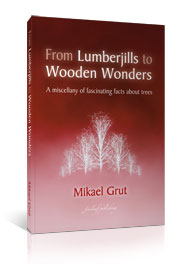Countries like Indonesia and Brazil are often criticized for replacing vast areas of forest with agriculture, but if the land is suitable for agriculture, preferably sustainable agriculture (but see “Slash-and-burn shifting cultivation” in the book), then such conversion from forest to farms can benefit mankind. After all, some of the best farmlands in Europe, Java and elsewhere were once forested. As someone said, “If primitive man had strong conservationist tendencies, we would still be primitive”. To criticize developing and emerging countries for doing the land conversions that we did, is nothing but eco-imperialism (see that entry in the book, and also “Deforestation and reforestation”).
What is sad is when sites which are suitable for forest but not for agriculture are deforested, leaving an empty desolate landscape. I saw such derelict land in the State of Pará in north Brazil.
The angst which deforestation gives us may be due to the tree-dwelling stage which our prehistoric ancestors went through (see “Evolution of early man”). Also, the word “Paradise” (see entry) is derived from a Persian word meaning “park”, i.e. an area with trees. Perhaps our angst is related to the angst felt by hens when they leave the protection of their coop (see “Fowl”), fearing to be seen by — in their case — birds of prey. But we are more complicated than fowls, and although we feel angst about deforestation, we also fear the forest. See “Tolkien” and “Tree and forest spirits”.
Mikael Grut, 12.10.2014

